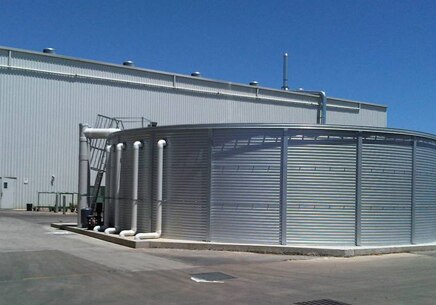
After agriculture, industry is the second largest consumer of water worldwide. However, the amount of water used varies widely from one type of industry to another. For appliance manufacturing, water consumption is relatively low, but with dwindling resources of clean water, every drop saved counts.
With only about 52 centimeters of rainfall per year in Adelaide, Australia, conserving water is a matter of course. At the Electrolux Cooker factory, the water saving mind-set has taken root in the workplace too, and for a number of years the cooker factory has employed measures to limit water use, recently under the Group's Green Spirit umbrella.
In 2009, the plant connected wastewater from its reverse osmosis process to a high use toilet block, saving 1,350 liters of water every day. This initiative and the others that preceded it saw Adelaide reduce its water use by 24% between 2006 and 2009.
Building on its success, the next step was to install a 350,000 liter rainwater storage tank in 2010. The tank harvests water from about two-thirds of the factory roof area and can hold up to ten days' supply of enamel and process water. It reduces the amount of water bought for processes by 70%, and the total water consumption of the plant by 30%.
Besides reflecting the Group's commitment to sustainability, the benefits of rainwater harvesting also include financial savings, it is a boost to employee spirit and a novel way of demonstrating engagement to retailers when they visit. Rainwater is also better suited for use in processes than municipal water, having a lower mineral content.
Under the Green Spirit program, Adelaide is minimizing its energy use too, and reached its 2012 target ahead of time. Plans in the pipeline include using the waste heat from enamel furnaces to heat process washwater in drying operations.
In 2010, Electrolux endorsed the UN Global Compact CEO Water Mandate. Electrolux has begun working towards its 2014 20% target for reducing water use Group-wide, using a 2010 baseline.
